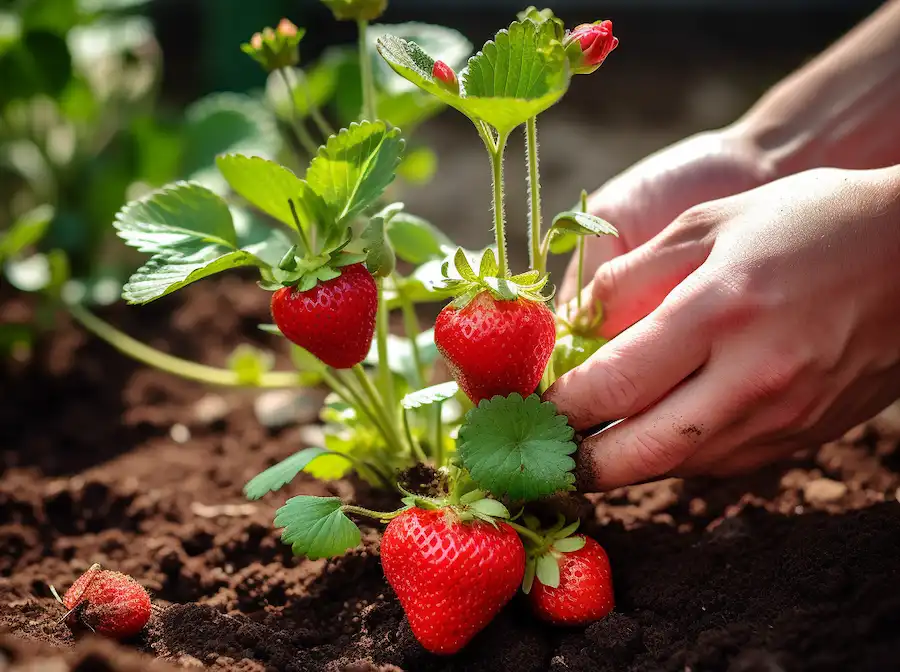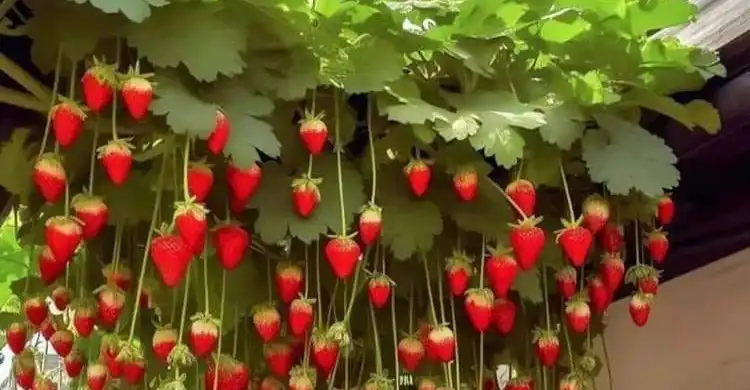A Comprehensive Guide to Growing Strawberries: From Seed to Harvest
Strawberries, with their luscious flavor and vibrant color, are a favorite among gardeners and food enthusiasts alike. Whether you have a sprawling garden or a compact balcony, growing your own strawberries can be a gratifying experience. This guide will walk you through the process of planting, growing, and caring for strawberries, starting with an intriguing fact: you can acquire seeds from the exterior of a strawberry fruit and cultivate them into thriving plants.
Getting Started with Strawberry Seeds
1. **Harvesting Strawberry Seeds
- Selecting the Fruit: Choose a ripe, healthy strawberry fruit. Ensure it is fully red and free from blemishes or mold.
- Extracting Seeds: To extract seeds, gently cut the exterior of the strawberry fruit using a sharp knife. Place the cut pieces on a paper towel to dry. The seeds will eventually detach and can be collected from the paper towel.
2. **Preparing Seeds for Planting
- Cleaning Seeds: Once the seeds are dried, clean them by gently brushing off any remaining fruit residue.
- Stratification: Strawberry seeds benefit from a period of cold stratification. Place the cleaned seeds in a damp paper towel inside a plastic bag and refrigerate them for 2-4 weeks. This simulates winter conditions and enhances germination rates.
Planting Strawberry Seeds
1. **Seedling Preparation
- Seed Starting Mix: Use a high-quality seed starting mix to sow the seeds. This mix should be light and well-draining.
- Sowing Seeds: Fill seed trays or pots with the seed starting mix. Scatter the strawberry seeds evenly on the surface, pressing them lightly into the soil but not covering them completely.
- Moisture: Mist the soil surface with water to keep it consistently moist. Cover the trays or pots with a clear plastic lid or plastic wrap to create a humid environment that aids germination.
2. **Germination and Growth
- Light and Temperature: Place the trays or pots in a warm, bright location with indirect sunlight. Strawberry seeds typically germinate at temperatures between 60-70°F (15-21°C).
- Germination Time: Strawberry seeds can take 2-3 weeks to germinate. Once seedlings emerge, remove the plastic cover and place them under grow lights or in a sunny spot.
3. **Transplanting Seedlings
- Preparing Containers: Once seedlings have developed 2-3 true leaves, they can be transplanted into larger pots or directly into garden beds.
- Soil Preparation: Choose a well-draining soil enriched with organic matter. Strawberries prefer slightly acidic to neutral soil (pH 5.5-7.0).
- Transplanting: Gently transplant the seedlings into the soil, spacing them about 12-18 inches apart. Water thoroughly after planting.
Caring for Strawberry Plants
1. **Watering
- Consistent Moisture: Keep the soil consistently moist but not waterlogged. Strawberries require regular watering, especially during dry periods.
- Avoid Wetting Leaves: Water at the base of the plants to avoid wetting the foliage, which can lead to fungal diseases.
2. **Fertilizing
- Balanced Fertilizer: Use a balanced fertilizer or compost to nourish your strawberry plants. Apply fertilizer in early spring as the plants begin to grow.
- Avoid Over-Fertilizing: Excessive fertilization can lead to excessive leaf growth at the expense of fruit production.
3. **Mulching
- Protect the Soil: Apply a layer of mulch around the plants to retain moisture, suppress weeds, and keep the fruit clean.
- Types of Mulch: Organic mulches such as straw, wood chips, or shredded leaves work well for strawberries.
4. **Pruning and Training
- Remove Old Leaves: Regularly remove old, dead leaves and runners to promote better air circulation and prevent disease.
- Train Runners: If growing strawberries in containers, train runners to stay within the container to maintain plant health and productivity.
Harvesting Strawberries
- When to Harvest: Harvest strawberries when they are fully red and ripe. Gently twist or cut the fruit from the plant to avoid damaging the stem.
- Frequency: Pick strawberries every few days during the fruiting season to ensure you collect ripe fruit and encourage continuous production.
Additional Tips
- Pest and Disease Control: Monitor your plants for pests like aphids and diseases such as powdery mildew. Use organic pest control methods and maintain good garden hygiene.
- Winter Care: In colder climates, protect strawberry plants with a layer of mulch or straw during winter to prevent frost damage.
Conclusion
Growing strawberries from seed is a rewarding endeavor that allows you to enjoy the sweet, succulent fruit right from your garden or balcony. By following these steps and tips, you can successfully cultivate your own strawberry plants, ensuring a bountiful harvest of delicious berries. Embrace the process and enjoy the fruits of your labor as you savor fresh strawberries throughout the growing season.

